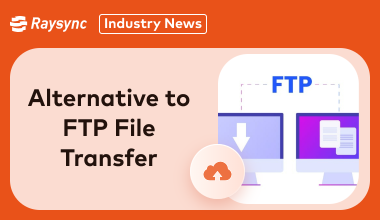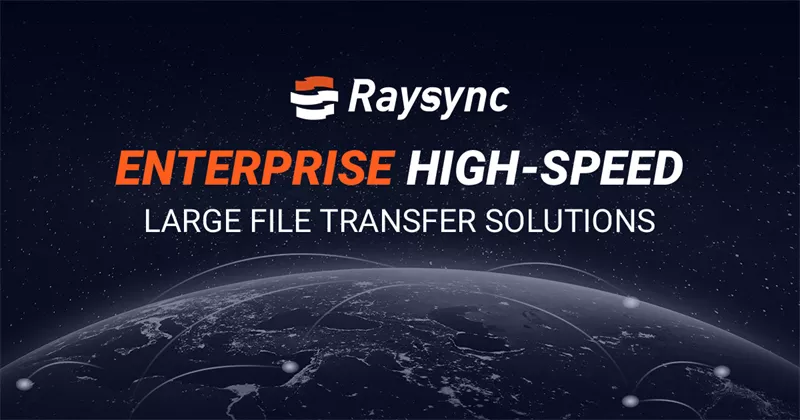6 Alternative to FTP File Transfer in 2025
August 5, 2024The digital world is innovating every second and in this rapidly evolving space, sticking to the old-school FTP is like using a flip phone in the age of smartphones. Sure, it gets the job done, but there are way cooler, faster, and more secure options out there.
If you're tired of dealing with sluggish speeds, security headaches, and compatibility issues, you've come to the right place!
In this blog post we will explore six fantastic alternatives to FTP file transfer that will make your digital life a whole lot easier in 2025.

What Is FTP FTP File Transfer
FTP (File Transfer Protocol) is a standard network protocol used to transfer files between a client and a server over a TCP/IP network.
It operates on a client-server model where the client initiates the connection and requests files, and the server responds by providing the requested files or accepting file uploads.
FTP is known for its simplicity and widespread support, but it lacks strong security features and can be slow for large transfers.
As technology advances, newer protocols and solutions offer more secure and efficient ways to handle file transfers. Users are now actively looking for modern alternatives to FTP.
Common 6 Alternative to FTP File Transfer in 2025
While FTP has been a go-to solution for decades, there are now plenty of modern alternatives to FTP that offer better security, faster speeds, and more efficient data handling.
Let’s look at 6 top-notch alternatives to FTP that are making waves in 2025:
1. MFT
Managed File Transfer (MFT) solutions is a modern alternative to FTP that provides a well rounded approach to file transfer with better security and compliance features. MFT systems offer centralized control, detailed audit trails, and integration with various business applications. They are designed to handle large volumes of data securely and efficiently, often with automation capabilities for routine tasks.
Pros and Cons
Pros:
- High security with encryption and compliance features
- Centralized management and control
- Automation of file transfer processes
- Detailed audit trails for compliance
Cons:
- Can be expensive compared to other options
- May require significant setup and configuration
- May be more complex for smaller operations
2. Raysync Transmission Protocol
Raysync Transmission Protocol is a modern alternative to FTP that is designed to revolutionize the way we handle data transfers. Unlike traditional FTP, Raysync is built for speed, security, and reliability, making it an ideal choice for businesses dealing with large files and high-volume data transfers.

With advanced transfer protocols, Raysync ensures that your data moves swiftly and securely across networks. Its high-level encryption safeguards your files, while its efficiency in handling large files makes it an excellent alternative to FTP file transfer.
Pros and Cons
Pros:
- Exceptional transfer speeds
- High-level security and encryption
- Efficient handling of large files
- Scalable for business needs
Cons:
- Higher cost compared to traditional FTP
- May have a learning curve for new users
- Primarily targeted at business users
3. FTPS
FTPS extends FTP by adding security features through the use of SSL/TLS encryption. It provides secure data transfer by encrypting both the control and data channels, addressing the major security shortcomings of standard FTP.
Pros and Cons
Pros:
- Adds encryption to standard FTP
- Secure communication with SSL/TLS
- Compatibility with existing FTP infrastructure
Cons:
- More complex setup compared to plain FTP
- Could be less performance due to encryption overhead
- May require additional configuration for firewalls and security policies
4. SFTP
SFTP, or SSH File Transfer Protocol, is a modern alternative to FTP that uses the SSH protocol to provide encryption and secure authentication. It is widely used for secure file transfers over an encrypted channel.
Pros and Cons
Pros:
- Strong security with encryption
- Secure authentication using SSH
- Reliable for secure file transfers over insecure networks
Cons:
- May require SSH access and configuration
- Can be slower than some modern alternatives due to encryption
- Limited to SSH-supported environments
5. HTTPS
HTTPS is a secure version of HTTP, using SSL/TLS to encrypt data transmitted between web browsers and servers. It is commonly used for secure web transactions and can also be utilized for secure file transfers.
Pros and Cons
Pros:
- Strong encryption with SSL/TLS
- Widely supported and trusted
- Suitable for secure web-based file transfers
Cons:
- Typically slower than dedicated file transfer protocols
- May require web server configuration
- Not specifically designed for large file transfers
6. IBM Aspera High-speed Transfer Server
IBM Aspera High-speed Transfer Server is a high-performance file transfer solution known for its speed and efficiency. It uses a proprietary transfer protocol to accelerate file transfers over wide-area networks (WANs) and the internet.
Pros and Cons
Pros:
- Extremely fast transfer speeds
- Optimized for large files and high-volume transfers
- Robust security features
Cons:
- High cost compared to other options
- Requires specific infrastructure and setup
- May be overkill for smaller file transfer needs
Talks on Reddit: What Do People Use Instead of FTP
Redditors have a lot to say about ditching FTP for file transfers! The consensus? FTP is outdated, insecure, and just not cutting it anymore. SFTP and FTPS are the go-to choices, offering great security with encryption and SSL. They’re like the bodyguards of file transfer protocols, making sure your data stays safe.
But that's not all! GitHub has also become a favorite. Developers love pushing code to their repos and pulling updates directly to their servers. It’s like magic—wave your coding wand, and voila! Everything's updated. And if you’re after lightning-fast, super-reliable transfers, look no further than Raysync Transmission Protocol. It’s a beast when it comes to speed and security, perfect for businesses with tons of data to move around. Plus, it scales effortlessly to meet your needs.
FAQs about Alternative to FTP File Transfer
Here are some frequently asked questions about FTP File transfer:
1. Why Are People Looking for Alternative to FTP File Transfer
Many people look for an alternative to FTP file transfer due to its lack of strong security features, slow transfer speeds, and limited support for modern file transfer needs. Alternatives offer improved encryption, faster speeds, and better integration with contemporary technologies, addressing the shortcomings of FTP and providing enhanced functionality.
2. Which Protocol Is Better than FTP
The choice of protocol depends on your needs. SFTP and FTPS are better for security, offering encryption and secure authentication. Raysync is known for high-speed transfers, while MFT provides comprehensive management features. Each protocol has its advantages, so consider factors like speed, security, and specific use cases when choosing the best alternative.
3. How do I Transfer Files Without FTP
You can transfer files without FTP by using alternative protocols like SFTP, FTPS, or HTTPS, or by employing modern alternatives to FTP like Raysync. These options offer improved security, better performance, and more features compared to traditional FTP.
Final Words
As technology continues to advance, the need for a more secure, efficient, and modern alternative to FTP has become apparent. While FTP has been a reliable option in the past, alternatives like Raysync provide significant improvements in speed, security, and functionality.
You might also like

Industry news
August 24, 2022FTP(File Transfer Protocol) is a common protocol in the file transfer process.Here is difference of active and passive mode for file transfer protocol.
![[2022] Only 1 Minute 50 Seconds to Transfer 100,000 Files Cross-border](http://images.ctfassets.net/bg6mjhdcqk2h/NSovzRp4KyMkiyfS7BRVS/aaa2d9b3f6b1d688f7ab6af66ccac523/1.png)
Industry news
April 7, 2022Intelligent compression, breakpoint resume, automatic error retransmission, and other mechanisms ensure stable and reliable transfer in an ultra-remote and weak network environment.

Industry news
November 21, 2022Our solutions enable you to send files of any size or format at full line speed, hundreds of times faster than FTP, while ensuring secure and reliable delivery.